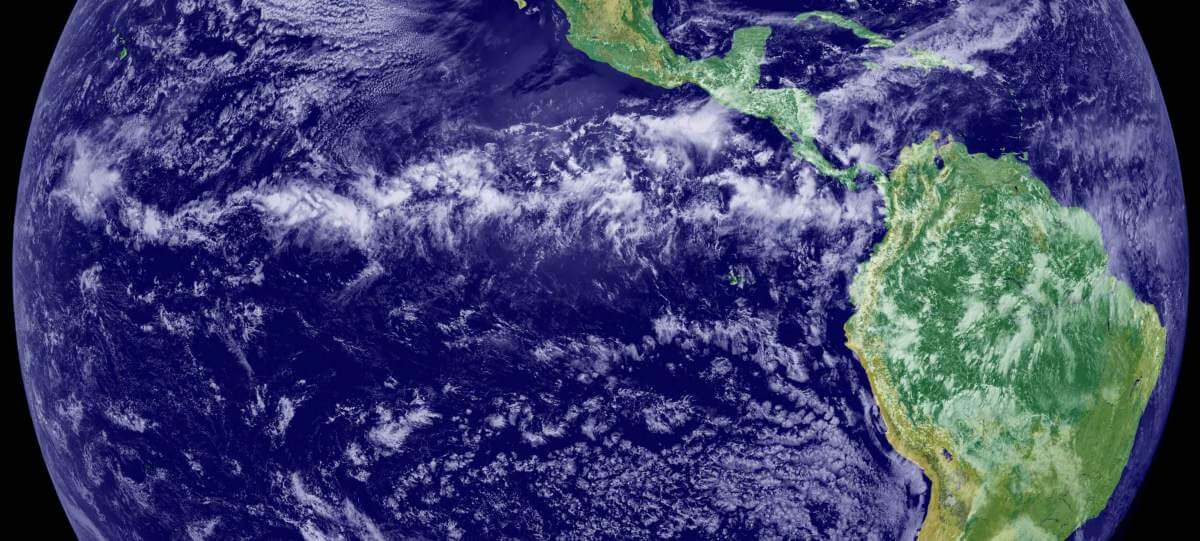For two decades, researchers have been trying to find a way to track a climate system that has a decisive influence on the location of rainforests and deserts on Earth. A new study solves the challenge and reveals the extent of the influence of humans

Above the rainforests and the oceans around the equator, a stream of hot and humid air rises into the atmosphere, driven by the power of the strongest solar radiation that hits the earth. From there it travels south and north, descends to the ground in the subtropical regions around the 30th parallel and contributes to the formation of huge deserts, chiefly the Sahara in North Africa. Later, the air stream known as the Hadley Cell returns to the equatorial region, where it warms up again, rises and continues its circular path.
The two bucket cells, the southern and the northern, transport most of the heat and moisture between the different latitudes, and are a decisive factor in determining the climate zones of the planet. As the warm, moist air climbs up, it cools; As a result, water vapor condenses and heavy rain falls in the equatorial region. Conversely, when the air currents return to the ground in the subtropical regions, they bring with them warm, dry air that suppresses precipitation. This is how the bucket cells determine where a desert and arid climate will prevail and where there will be a rainy environment. Israel is on the edge of the northern bucket, which contributes to the formation of the relatively desert climate in our region.
Due to the great importance of the bucket cells, scientists studying the climate crisis have a great interest in them. However, while data on precipitation or temperature are abundant, it is almost impossible to measure the flow of wind throughout the atmosphere. Along with this, a contradiction was discovered between different models that try to estimate what is happening in the bucket cells. The main models of climate change research estimate that the strength of the northern bucket cell has weakened in recent decades. While other models, based on observations, actually identified a strengthening. The lack of certainty regarding the system that is so essential to the earth's climate impairs the ability to assess how much humans have influenced the current situation - and the result is damage to the credibility of the predictions for the earth's climate and the ability to formulate the policies required to deal with the climate crisis. This fact was emphasized in the latest UN report on climate change (IPCC report), the most important document in the field.
In the article thatRecently published in the scientific journal Nature, Dr Rai Chamka From the Department of Earth and Planetary Sciences at the Weizmann Institute of Science and Dr Yani Yuval from MIT tackled the uncertainty in the existing models, which has lasted for two decades, and proposed an observation-based method for measuring the strength of the air flow in the bucket cells.
To crack the challenge, Dr. Chamka and Dr. Yuval looked for available data that would allow them to formulate a method for measuring cell strength. To this end, they examined the physical equations of the air flow and identified an equilibrium between the intensity of the flow in the cells and the air pressure on the surface of the ground - a figure that is constantly monitored. Based on this insight, they turned to examine observations collected over decades, and concluded that the strength of the bucket cell in the Northern Hemisphere is weakening, in line with the prediction made by the climate change models. Moreover, they showed with a very high degree of certainty that the weakening of the intensity is a product of human activity and that it is expected to continue in the future.
And what might happen in the field as a result of the weakening of the power of the bucket cell? In the coming decades, it is expected to moderate the increase in precipitation in the tropical regions around the equator and their weakening in the subtropical desert regions. However, this is not good news for Israel, where the trend of dehydration and desertification is expected to continue due to other factors.
"The research shows that human activity is already changing one of the main climatic processes. In addition, the new findings give more confidence in the predictions of the models and therefore allow us to deal more accurately with climate change", concludes Dr. Chamka. "In a follow-up study, we will examine whether a similar weakening of the bucket cell has occurred in the last thousand years due to natural activity, and thus we will be able to assess how unusual the change created by man is."
